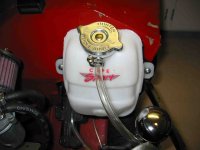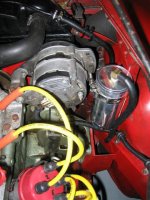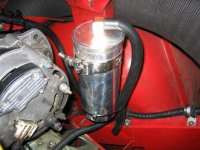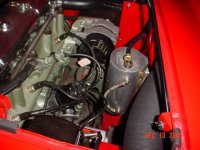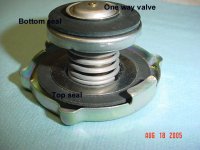Offline
I have just installed a coolant recovery tank in the bugeye. It is the unit that Cape International sells. Expensive but handsome! I am using it in the Big Healey as well. This unit collects overflow from the radiator at the bottom of the tank and it has a drain line at the top of the tank to the ground.
I assume that I take the original (but nearly new) 7 psi cap and use it on the overflow tank. Do I then use a non-pressurized cap on the radiator? so that coolant can move back and forth with expansion and contraction. If so, where does one get a non-pressurized cap and is it ANY non-pressurized cap or something special? Am I making any sense?
Thanks for the help as always!
Lin
1960 BT7 in restoration
1959 Bugeye
I assume that I take the original (but nearly new) 7 psi cap and use it on the overflow tank. Do I then use a non-pressurized cap on the radiator? so that coolant can move back and forth with expansion and contraction. If so, where does one get a non-pressurized cap and is it ANY non-pressurized cap or something special? Am I making any sense?
Thanks for the help as always!
Lin
1960 BT7 in restoration
1959 Bugeye

 Hi Guest!
Hi Guest!

 smilie in place of the real @
smilie in place of the real @
 Pretty Please - add it to our Events forum(s) and add to the calendar! >>
Pretty Please - add it to our Events forum(s) and add to the calendar! >> 

